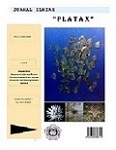Size Structure, Growth Pattern and Factors of the Condition of Baronang Fish (Siganus canaliculatus) from Ratatotok Waters, Ratatotok District, Southeast Minahasa Regency
DOI:
https://doi.org/10.35800/jip.7.1.2019.22750Abstract
The purpose of this study was to determine the size stucture, growth pattern, and relative conditions of rabbitfish (Siganus canaliculatus). Sampling was randomly done from the catches of fishermen in fesh condition. The number of fish samples taken for analysis was 61 individuals. Their fin color was yellowish or sometimes reddish purple. Measurements found that the fish samples had length range of 127 mm - 270 mm, and weight range of 21 and 249 g. Males had size range of 131-270 mm long with a body weight of 26-249 g and females had a body length of 127-249 mm, with a weight range of 21-191 g.
Key words: Factor conditions, catches, fishermen, measurements.
Â
ABSTRAK
Tujuan dari penelitian ini adalah untuk mengetahui struktur panjang, berat, pola pertumbuhan dan faktor kondisi relatif ikan Baronang (Siganus canaliculatus). Pengambilan sampel di lapangan dilakukan dengan metoda sampling yaitu dengan cara mengambil sampel ikan secara acak dari hasil tangkapan nelayan yang masih berada dalam kondisi segar. Jumlah sampel ikan yang diambil untuk dianalisis sebanyak 61 ekor. Hasil pengukuran secara keseluruhan menunjukkan bahwa ikan memiliki kisaran panjang 127 mm - 270 mm, dan berat antara 21 dan 249 g. Jantan  memiliki kisaran panjang 131-270 mm dengan berat tubuh 26-249 g, dan betina memiliki panjang tubuh 127-249 mm, dengan berat tubuh 21-191 gram.
Kata kunci: Faktor kondisi, hasil tangkapan, nelayan, pengukuran.
Downloads
Published
How to Cite
Issue
Section
License
COPYRIGHT
Authors who publish with this journal agree to the following terms:
Authors hold their copyright and grant this journal the privilege of first publication, with the work simultaneously licensed under a Creative Commons Attribution License that permits others to impart the work with an acknowledgment of the work's origin and initial publication by this journal.
Authors can enter into separate or additional contractual arrangements for the non-exclusive distribution of the journal's published version of the work (for example, post it to an institutional repository or publish it in a book), with an acknowledgment of its underlying publication in this journal.
Authors are permitted and encouraged to post their work online (for example, in institutional repositories or on their website) as it can lead to productive exchanges, as well as earlier and greater citation of the published work (See The Effect of Open Access).




















